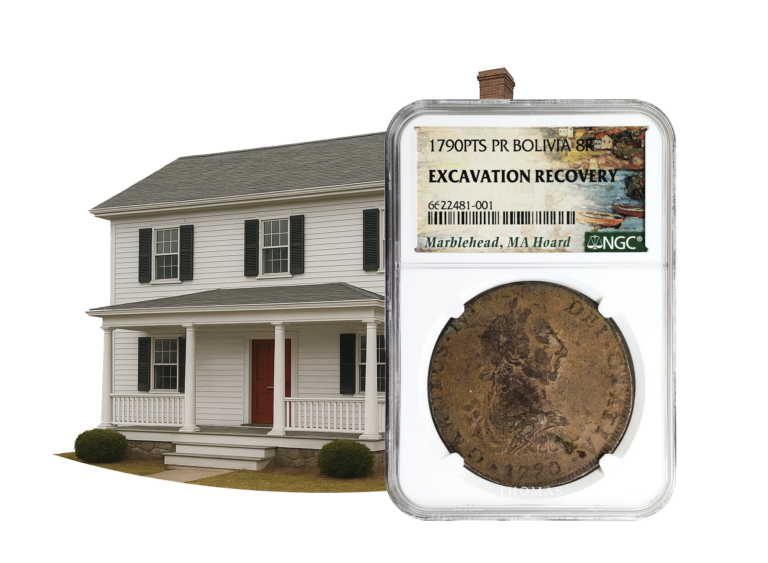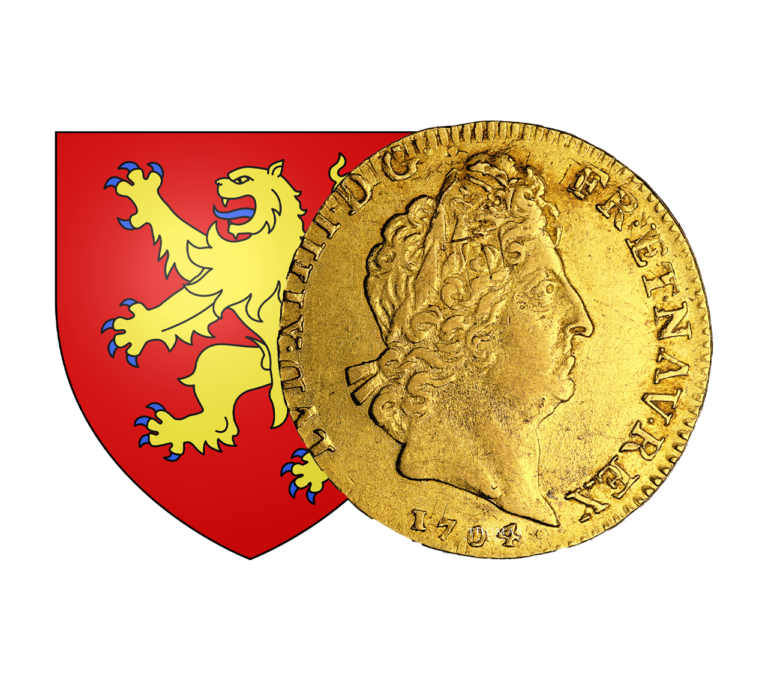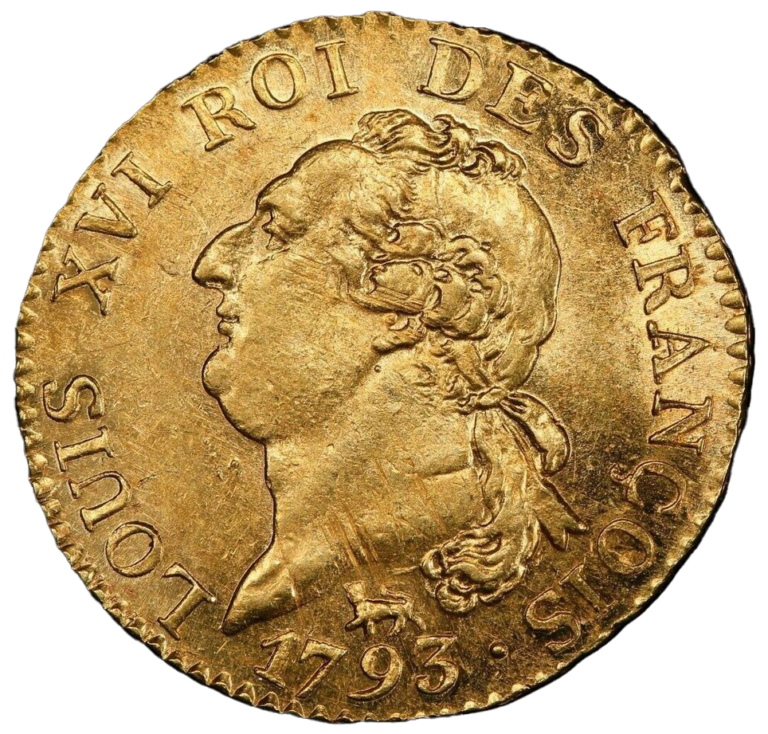
Discover all the news and articles from TNUMIS Magazine exclusively
THE GOLD COINS OF PHILIP VI
From the reign of Saint Louis (1214-1270), the kings of France strove to centralize and unify coinage, gradually putting an end to feudal minting. This process reached its peak under Philip IV the Fair, but reached a turning point under Philip VI of Valois (1293-1350). Faced with the challenges of the Hundred Years’ War, the latter overturned the monetary policy of his predecessors by increasing the issuance of precious metals to finance his kingdom and his army.
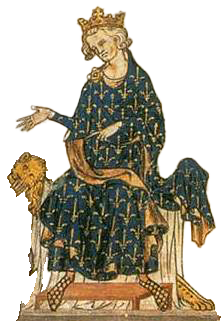
Despite the context of the crisis, Philip VI is today recognized as one of the sovereigns who produced the finest gold coins in French numismatics. His reign (1328-1350) saw the appearance of ten different types of gold coins, seven of which were struck in just four years (1337-1341) due to the financial imperatives of the conflict with England. Among them:
L’écu d’or à la chaise (1337)
Le lion d’or (1338)
Le pavillon d’or (1339)
La couronne d’or (1340)
Le double d’or (1340)
Le florin georges (1341)
L’ange d’or (1341-1342)
Each new issue was re-evaluated in relation to the previous one, reflecting economic developments and the financing needs of the kingdom.
LA COURONNE D’OR
Among these exceptional mintages, the gold crown stands out for its rarity and refinement. Its issue began in January 1340, but was abruptly discontinued the same year, making it one of the most difficult coins for collectors to find today. Its obverse features a richly crafted royal crown, a symbol of sovereign power, from which it takes its name. Its design reflects the high level of sophistication achieved by French gold coinage at this time.
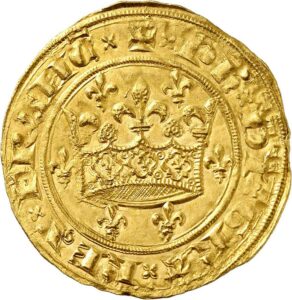
LE FLORIN OR GEORGES
In 1341, Philip VI introduced a new gold florin, called the “George florin,” recognizable by its unusual obverse depicting Saint George on horseback, piercing a dragon. This figure of Saint George, perhaps chosen as a protector after the heavy naval defeat at Sluys in 1340, is all the more surprising given that he was the patron saint of England, then an enemy.
First minted on February 4, 1341, this florin depicts Saint George slaying the dragon, framed within a polylobe decorated with fleurs-de- lis. The legend begins with a fleur- de-lis and reads: + PHILIPPVSx: DEIx GRACIAx FRANCORVMx REX, meaning “Philip, by the grace of God, King of the Francs.”
On the reverse, a trefoil cross appears in the center of a quatrefoil, flanked by four fleurs-de-lis. The legend uses the traditional formula: XPC VINCIT XPC REGNAT XPC IMPERAT, meaning “Christ conquers, Christ reigns, Christ commands.”
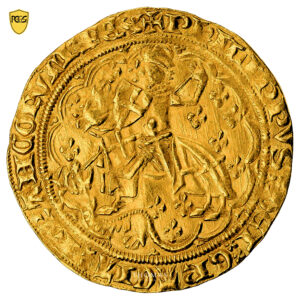
LE DOUBLE D’OR
The Gold Double of Philip VI is one of the most prestigious and rare French coins. Its acquisition is now reserved for major collectors or institutions; it is the first large gold coin minted by a king of the Valois dynasty. It was intended for large-scale transactions, large-scale trade, and diplomatic prestige. The obverse depicts Philip VI seated on the throne, crowned, holding a sword and broadsword, a symbol of royal justice. The reverse features a leafy cross (cross with lilies) within a quatrefoil.
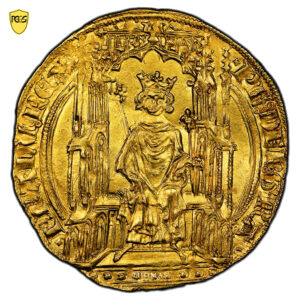
ECU D’OR À LA CHAISE
Coin of Philip VI, referring to the Hundred Years’ War. This time, it depicts the king in armor, armed with his sword and his shield bearing the fleurs-de-lis. Its name, “gold shield with a chair,” comes from the fact that it depicts Philip VI seated in a Gothic stall whose steps are adorned with saltires. The reverse features the traditional quatrefoil and fleur-de-lis cross, with a heart-shaped quatrefoil, within a quatrefoil decorated with leaves and flanked by four stemless trefoils.
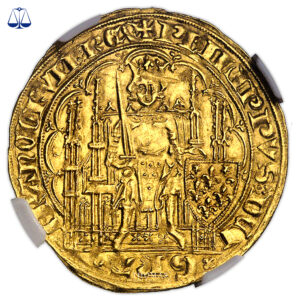
LE PAVILLON D’OR
The Golden Pavilion is a very fine example of Gothic coinage. The pavilion’s theme is also reputed to have been adapted for the seal of majesty of King Philip VI. Minted in 1339, this gold coin is one of Philip VI’s most important coins. The obverse depicts the King seated on a curule chair decorated with lion heads, crowned, holding the fleur- de-lis scepter in his left hand beneath a fleur-de-lis pavilion and surmounted by a lily. The reverse features a quatrefoil cross, leafed and fleur-de-lis, curved into a heart, within a trefoiled quatrefoil flanked by four crowns.
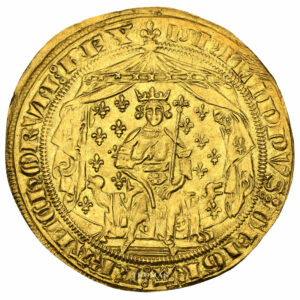
L’ANGE D’OR
The golden angel takes its name from the Archangel Saint Michael, standing crowned and winged, holding in his right hand a long-shafted cross planted in a dragon and the shield of France in his left. On its reverse side, we find the quatrefoiled, leafy, and fleur-de-lis cross. An extremely rare piece that is missing from most collections.
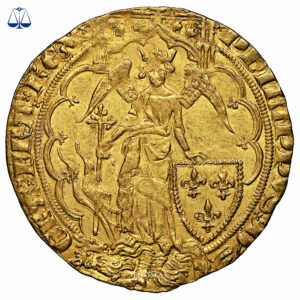
PRESTIGE COINS FOR COLLECTORS
Owning a Philip VI gold coin means owning a piece of history, a tangible testament to the political and economic upheavals of the 14th century. Their rarity makes them sought-after coins by numismatic enthusiasts.
Don’t miss the opportunity to add these exceptional coins to your collection! Discover our available coins and delve into the fascinating history of the first decades of the Hundred Years’ War.
